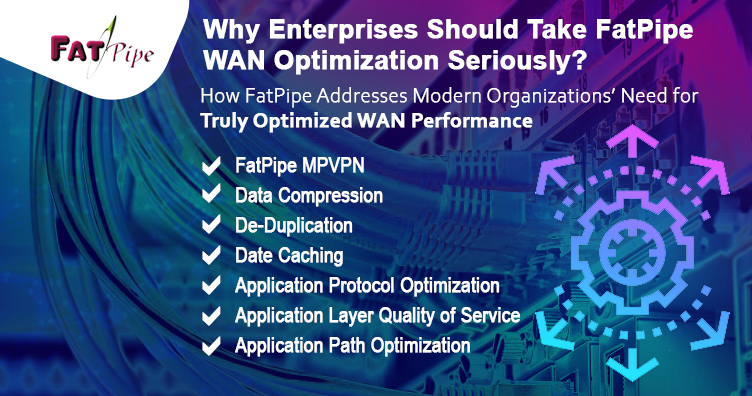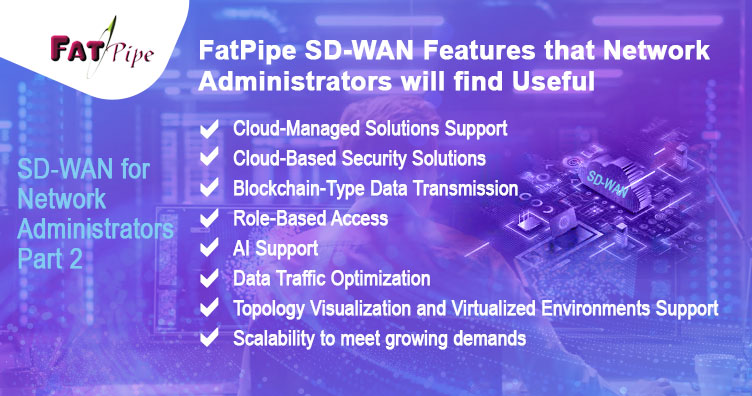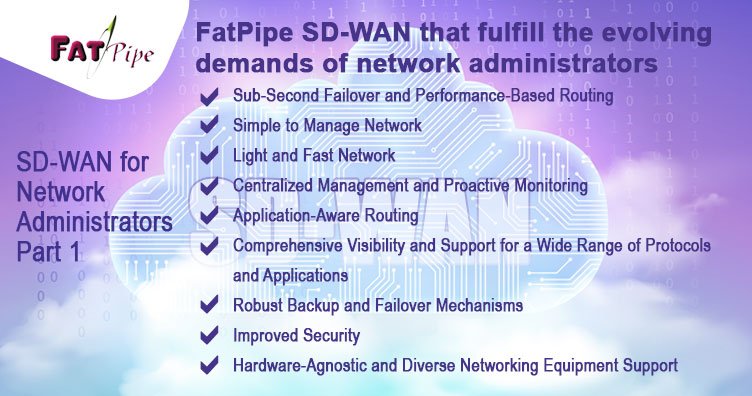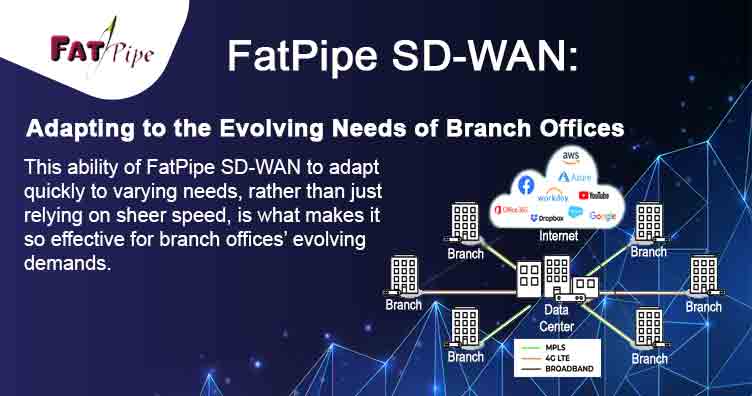Why Enterprises Should Take FatPipe WAN Optimization Seriously

FatPipe is the only product that combines WAN edge with true SD-WAN and true WAN optimization in a single software.
There is a wide misconception that WAN optimization is only about traffic shaping, data de-duplication, compression, data caching, and protocol spoofing. While these techniques are a good start, they often fail short of providing peak performance of a modern wide-area network where the networks are becoming complex and the nature of data traffic is changing with implosion of cloud workloads and huge amount of voice plus video traffic. An addition of flexible connectivity, application path optimization, non-duplication of packets and application portability to this list helps companies greatly improve network performance.
How FatPipe Addresses Modern Organizations’ Need for Truly Optimized WAN Performance
FatPipe patented technology has enabled organizations to enhance network performance and improve end user experience multifold.
FatPipe MPVPN: FatPipe true SD-WAN has unique ability of single IP framework across multiple divergent links that optimizes the network as it works without dynamic routing protocols to save the overheads and tunnel overheads. This feature has resolved the problem of aggregation of 4G/5G last miles with other terrestrial lines.
Data Compression: FatPipe has integrated data compression, and it can be applied for specific applications, locations, or combination of the two.
De-Duplication: FatPipe reduces the number of duplicate packets that needed to be sent across the WAN to complete a session flow.
Date Caching: Similar to integrated data compression, FatPipe has integrated data caching, and it can be applied for specific applications, locations, or combination of the two.
Application Protocol Optimization: FatPipe optimizes application flow whenever the situation demands. The idea is if an application runs over a LAN, it should function optimally on the WAN too.
Application Layer Quality of Service: FatPipe policy rules prioritize applications that are business-critical.
Application Path Optimization: FatPipe enables application flows to be optimized across the best path selection for each application based on real-time metrics like latency, packet loss, jitter, and available bandwidth.
FatPipe – Addressing New Challenges in WAN Optimization
FatPipe WAN optimization solution reduces TCO through its advanced techniques. It is at an innovative byte level, ensuring industry-best traffic optimization granularity. It boils down to making intelligent decisions in the method of data processing and transmission across the WAN.




